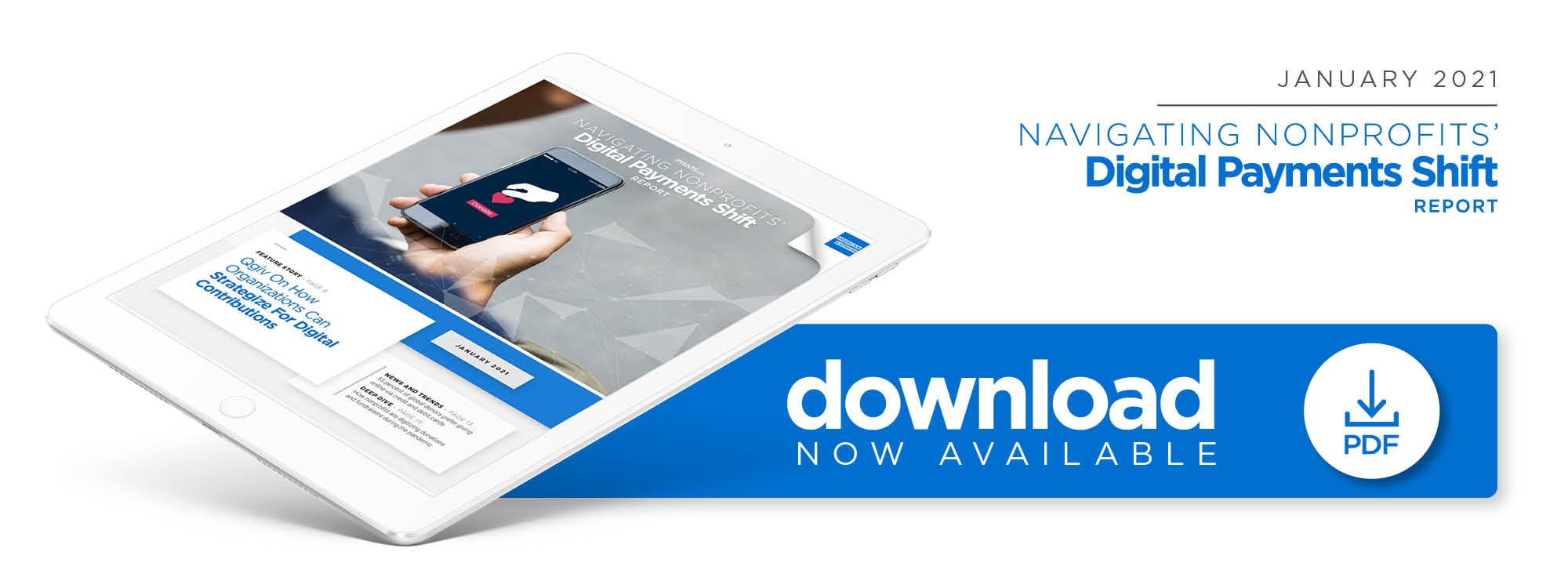Qgiv On How Organizations Can Strategize For Digital Contributions

Nonprofits are making the digital shift, but clunky payment experiences can cause donors to bail on their contributions, warns Todd Baylis, president of fundraising software solutions provider Qgiv. In the Navigating Nonprofits’ Digital Payments Shift Report, Baylis explains how digital payments are keeping donors in a charitable mood.
 Digital engagement has long been a part of nonprofits’ toolkits for reaching out to donors, and the pandemic has made a strong virtual strategy more vital than ever. Organizations that can no longer safely hold in-person galas and other fundraising events are leaning more heavily on online platforms and channels to help them solicit donations. Some charities are even seeing these new approaches reduce long-running frictions, according to Todd Baylis, president and co-founder of fundraising software solutions provider Qgiv.
Digital engagement has long been a part of nonprofits’ toolkits for reaching out to donors, and the pandemic has made a strong virtual strategy more vital than ever. Organizations that can no longer safely hold in-person galas and other fundraising events are leaning more heavily on online platforms and channels to help them solicit donations. Some charities are even seeing these new approaches reduce long-running frictions, according to Todd Baylis, president and co-founder of fundraising software solutions provider Qgiv.
Baylis explained in a recent interview with PYMNTS how nonprofits have been transitioning their fundraising and outreach strategies to the virtual stage during the pandemic to keep donations coming in. He also revealed some of the digital payments and messaging best practices that can help charities encourage more giving.
From Brick-And-Mortar To Bytes-And-Modem
Organizations that previously held in-person events and collection drives have largely had to cease or scale down those efforts for public safety. Many are instead turning to digital platforms to connect with contributors, which can look very different. Charity runs and auctions have been replaced with livestreamed events held over Zoom or Facebook, for example, and social media tools and crowdfunding drives are helping these virtual happenings gain visibility, Baylis said. Food banks that used to hold drives where they accepted donated groceries are now asking for online monetary contributions for virtual pantries.
Some of these changes have been particularly positive. Food banks often face the problem of obtaining the specific items required to fulfill the current needs of the communities they serve, for example. The shift away from in-person drop-offs of canned goods to online monetary donations allows these organizations the flexibility to buy exactly what is needed for the communities in which they operate, Baylis explained.
“Organizations — especially food banks — don’t just need food, and, a lot of times, the food they get isn’t what they need to provide to the community,” Baylis said. “So those dollars and those replacement dollars are very impactful.”
Not all campaigns have translated as smoothly to online venues, however. Some charities’ virtual events appear to be drawing less overall revenue than traditional, in-person events, Baylis said, but it is unclear whether this is due to their being virtual or outside factors. He also observed that digital events could significantly cut organizations’ overhead costs, meaning they may generate higher income despite the reduced funds raised.
Digital Messaging
High-profile fundraising events are not the only way of encouraging donations. Sending donors direct requests for new giving remains important, Baylis said. Charities cannot rely on the assumption that consumers will think to seek them out, so they must actively reach out to ask for contributions. Email continues to be the messaging channel with the greatest success rate, even as some organizations find favor with methods like social media campaigns and targeted texting, he said.
Crafting that communication is important, too, and charities have been particularly effective at raising funds when they can quickly make their needs known to potential donors and explain how their causes help individuals negatively affected by the pandemic.
“Human services, housing and shelter, employment-related type organizations, agriculture and food [and] nutrition type organizations all were more successful than they had been pre-pandemic in the fundraising we saw,” Baylis said. “There were very large increases of three to four times in certain segments.”
Requesting smaller, recurring donations can also be an effective strategy for encouraging giving from donors who may not be able to afford a sizable one-off contribution and for creating continued revenue streams, Baylis added. Quick and easy payment methods need to accompany these requests as well, he said. Emotional appeals often inspire one-off online donations, so organizations need to ensure that frictions do not interrupt and distract contributors before they can complete their transactions. Organizations can achieve this seamlessness by offering various payment methods so that donors can always find their preferences and not abandon payment. That often means accepting many different card brands and ACH as well as cash and check, he said.
The pandemic continues to present new fundraising struggles, but nonprofits are rallying in response. Many organizations are now honing their digital donation approaches and trying out new fundraising ideas. Compelling messaging, convenient and secure payment experiences and creative virtual events can help nonprofits bring in the money they need to fuel their critical work.